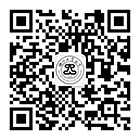- 学术动态
报告题目:Bonded Rare Earth Magnets
报 告 人:Dr. Kenji OHMORI(大森贤次 博士), Managing Director, The Japan Association of Bonded Magnetic Materials
报告时间:2019年7月9日(周二)上午10:00
报告地点:邵科馆二楼国际会议厅
邀 请 人:功能材料研究所 车声雷 教授
报告人简介:
大森贤次先生,1977年本硕博毕业于日本东北大学获得工学博士学位,留校工作十年,任助教、副教授。1987年进入住友金属矿山株式会社从事磁性材料的研究开发工作,其间赴美国宾夕法尼亚大学进修一年,2009年退休。大森博士在新型稀土永磁、粘接磁体等领域有许多开拓性的研究成果,退休后受聘日本东北大学客座教授(多元物质科学研究所),日本政府新能源机构(NEDO)技术委员、项目负责人,日本国家材料科学研究机构(NIMS)磁材料共同学术员,2009起任日本磁性材料协会专务理事兼秘书长至今。
报告摘要:
Bonded magnets are obtained by solidifying and molding various magnet powders with binders. Although the magnetic properties of the bonded magnet are inferior to those of sintered magnet due to the inclusion of binders and the remaining of fine pores, it has been widely used in small motors for electronic devices. It has a high degree of freedom in shape, can be manufactured such as thin ring shape and near net shape with high precision, can be integrally molded with the shaft or the case, and can reduce rotational shake.
Several kinds of alloy as SmCo5, Sm2TM17, Nd2Fe14B, Sm2Fe17N3, and SmFe9Nx are commercially used. Also, several kinds of binders as Epoxy, Nylon, PPS, and Elastomer are commercially used. General fabrication methods are compression molding, injection molding, extrusion, and calendar roll.
SmCo5 was first used. However, since it is very fine powder and chemically active, if it is exposed to the atmosphere carelessly, it may ignite, or the surface is easily oxidized, and the magnetic properties are degraded. Therefore, no inexpensive manufacturing method had been developed.
There were two kinds of development to increase the commercial use.
In 1979 (Japan), Seiko Epson's Shimoda et al invented the Sm2TM17 magnet powder. It is a SmCo-based alloy close to the 2-17 composition added with Cu, and high coercivity can be obtained even when it contains iron. It has been recognized in the market as a practical material.
In 1983 (US) GM Croat et al. invented an iron-based magnetic material. Although the aforementioned Sm2TM17 had been recognized as a stable magnet, it was extremely expensive, and its use amount was limited because it was indispensable to use precious Sm and unevenly distributed Co. The newly developed magnet material has the advantage of being able to use relatively abundant Nd stored in rare earth elements and being based on inexpensive iron. This material forms a large market as a magnet material for motors.
Unfortunately, this powder is isotropic, so there were many studies to make anisotropic powder. Now it is possible to use anisotropic powders such as Sm-Fe-N and HDDR Nd-Fe-B powder.
This lecture will explain in detail the development of bonded magnets and their characteristics.



